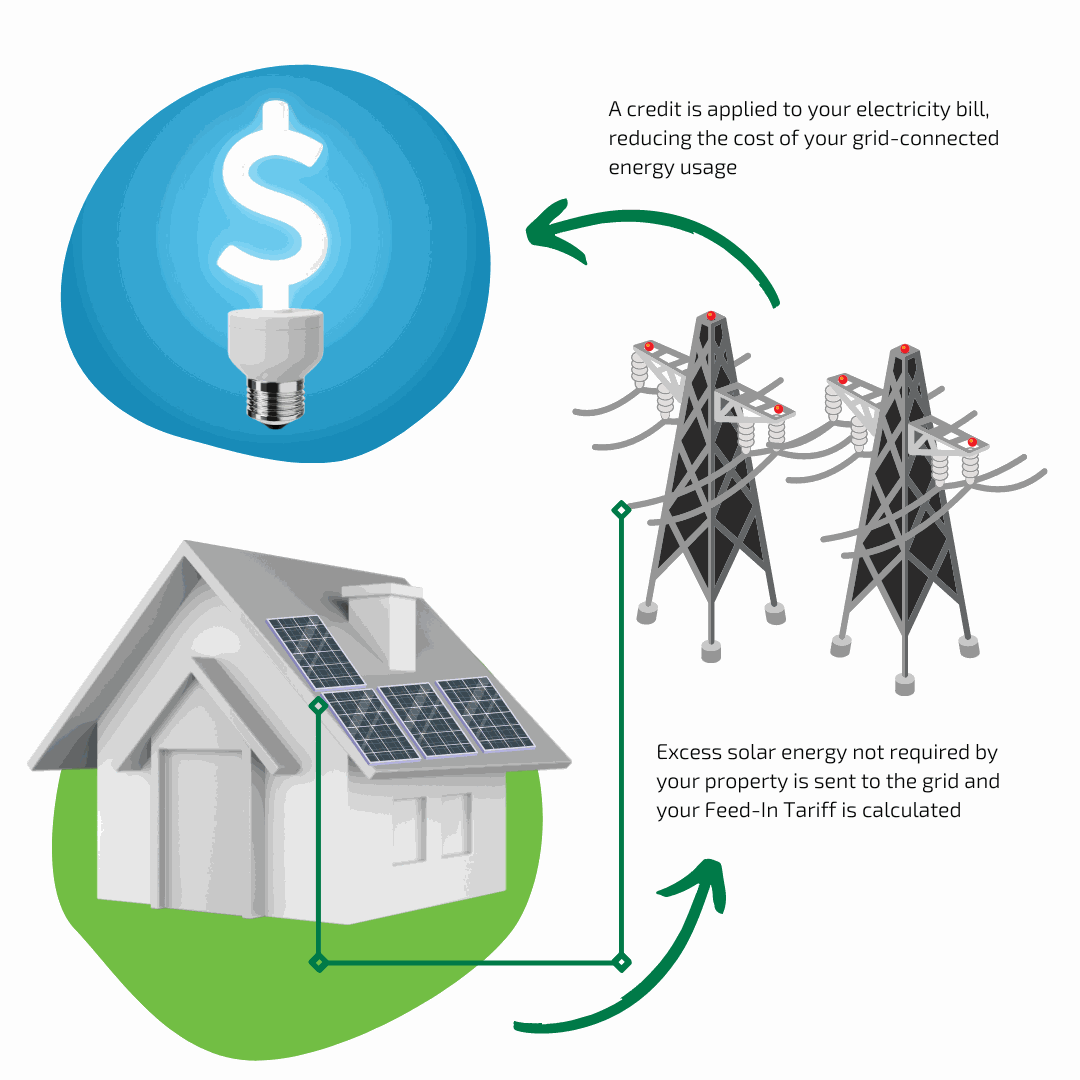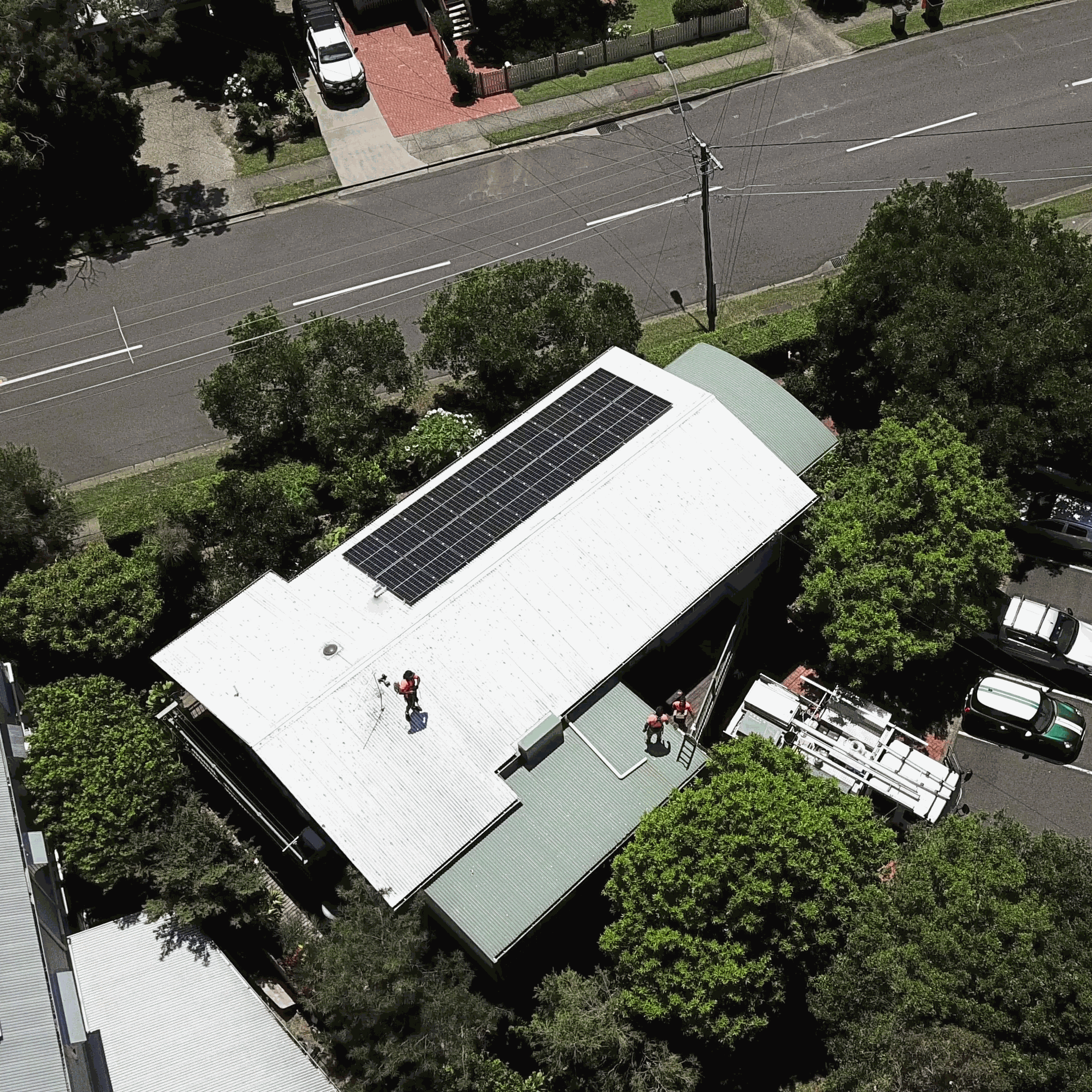There are several factors to consider when investing in a solar system for your home. Cell types, panel specifications, inverters, and batteries… the process can be an overwhelming ordeal, especially when you’re not sure of your main priority when it comes to solar.
A deciding factor that is making itself more apparent among solar buyers is the feed-in tariff (FiT). A feed-in tariff is a credit customers receive from power providers when unused energy from their solar system is exported to the electricity grid. For example, if your property has only used 20kWh but your solar system has produced 30kWh, the 10kWh difference will be sent back to the grid and you will receive a set rate per kWh, which is paid as a credit on your electricity bills.

Feed-in tariffs differ between energy providers as well as between states, so it’s best to do your own research in order to identify which feed-in tariff applies to your property. Currently, anywhere from 6 cents per kWh to 9 cents per kWh is an average tariff.
If you’re surprised at how little the reward is, you’re not alone - many have been up in arms regarding the feed-in tariffs as they have gradually decreased over the years. The reason is, as more properties across Australia have rooftop solar installed, an over-supply of solar generation is occurring and this results in the wholesale cost of electricity decreasing.
Because of this, homeowners are beginning to fall into the trap of building their solar energy system based on what feed-in tariff they will receive. Currently, electricity providers are paying a higher rate for those who have smaller system limits, leading some to opt for a smaller installation. Our solar experts warn against deciding on system sizes based purely on feed-in tariffs and urge clients to consider the following before investing in a smaller residential system to earn a higher tariff.

Whilst you might initially earn a lower rate with a larger system installed, it’s important to remember that the system will be delivering a higher amount of solar generation, which in the long run, will deliver better returns than a smaller system with a higher tariff. We recommend prioritising larger solar volume over higher FiT rates.
Secondly, while high rate tariffs may be tempting right now, electricity providers have the authority to change the offering rate at any time. What may be a high feed-in tariff now, can easily be reduced over time. If you’ve invested in a small system for your property and the rates change, the danger is that your system will no longer be providing the higher tariff benefit and you will be left with a potentially undersized system for your property. This is particularly important with the prospect of increased energy loads in the future (think, electric vehicles, pool heating, additional air conditioning, etc.). With increased energy loads, it may be necessary to upgrade your smaller system for a larger capacity, which will be costly and timely down the road.
Further to this, battery prices continue to decrease and if you want energy independence either now or in the future you need a large enough solar system to provide not only your day time loads but enough to have excess to store the energy in the battery for night time use.
In summary, rather than base the size of your solar system on feed-in tariffs, assess the energy needs of your property by determining the minimum amount of electricity your home will need to function on an hourly or daily basis. Chasing tariffs are an unstable deciding factor, and in the long run, it may leave you with a system that is not performing the return-on-investment you would like.
Who Are We?
At Springers Solar we only recommend and install quality components that have been expertly selected by our team of in-house engineers, solar experts, and project managers. We design our systems to fit the unique requirements of your home or business and only select the components that will perform under those conditions. We are trusted by some of the largest inverter manufacturers in the world and are recognised as preferred/recommended installers for a large portion of them. Making the choice to solar is an investment so taking the time to research and choose components that will work for your project is important to us.
Contact us about anything related to our services using the form below.
We'll get back to you as soon as possible.
Feed-In Tariffs vs. Solar System Sizing